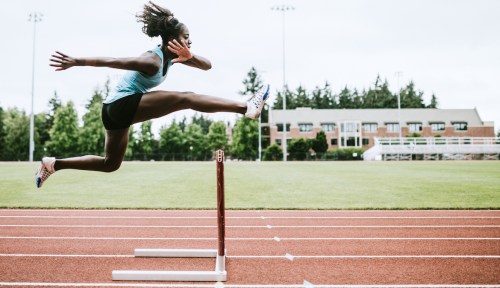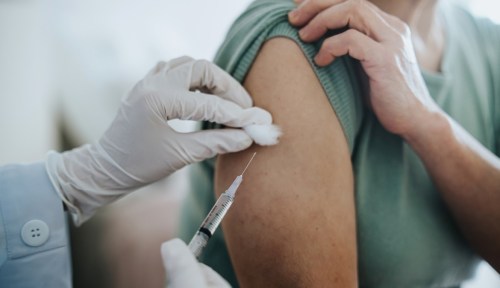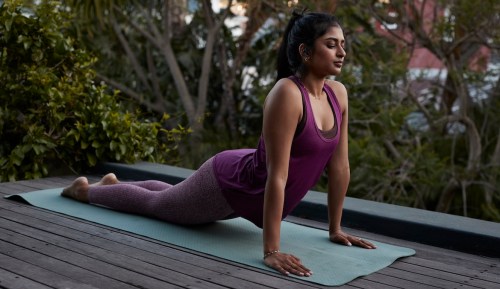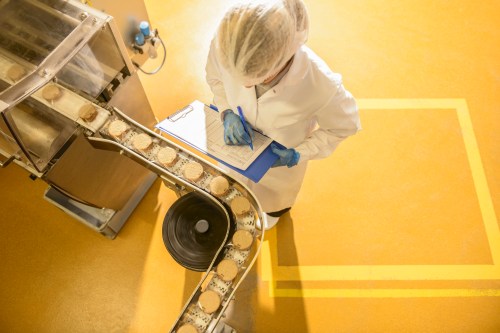Over the past two years, I’ve heard numerous menstruators talk about “hacking” their period, aka tracking it to make the most of their workouts. Initially, I thought it was just another nonsense wellness trend and kept it moving.
Experts in This Article
Amy West, MD, EdM, is a sports physician, assistant professor of orthopedics and physical medicine and rehabilitation at Hofstra School of Medicine.
Kathleen L. Davenport, MD, is a sports medicine physiatrist at the Hospital for Special Surgery in Florida.
But when I noticed my Whoop device—a fitness tracker that gives you insight into your recovery, strain, sleep, and health—had a new menstrual cycle coaching feature, providing recommendations on how to train throughout the various stage of menstruation (yes, your cycle isn’t just when you bleed!), I decided to pay more attention. So, for a month I tracked and “hacked” my cycle to see if it would improve my athletic performance and make me feel better overall.
The phases of your menstrual cycle
Over the course of a roughly 28-day cycle, there are hormonal fluctuations that can affect things like exercise tolerance, recovery, heart rate, and mood, says Amy West, MD, EdM, sports physician, assistant professor of orthopedics and physical medicine and rehabilitation at Hofstra School of Medicine.
“The body is sending certain hormones to essentially prepare the uterus to have a baby, and then the ovulation happens, and then if that egg is not fertilized, then the body is then getting rid of everything that was made there to support any kind of pregnancy,” adds Kathleen L. Davenport, MD, a sports medicine physiatrist at the Hospital for Special Surgery in Florida.
Throughout each phase of your cycle, your hormones are changing and as a result, affect your body as it prepares to have a period or for pregnancy. This “can also affect our exercise and other things in our body since our hormones are not just localized to the uterus, or to the ovaries, or eggs,” says Dr. Davenport.
The follicular phase
Most menstrual cycle lengths range from 25 to 30 days, but this is individual for each menstruator and may also vary cycle-to-cycle. According to Dr. Davenport, the follicular phase technically begins on the first day of your period. Taking approximately 14 days, it is considered the “low hormonal state,” when your estrogen and progesterone levels are low, and follicle-stimulating hormone (FSH)—which stimulates the ovarian follicles to grow and mature an egg—and luteinizing hormone—which triggers the release of an egg from the ovary—occur in lower concentrations, explains Dr. West.
During the early part of this phase, you’re able to build more muscle than other times of the month because this is when your body can handle the most stress, according to Dr. West. This is the time to take advantage of high-intensity and resistance workouts. You also might notice that your recovery is better and see that your heart rate variability is higher, which means your body can perform at a higher level.
The ovulation phase
As you approach the ovulation phase, when the egg is released, your estrogen levels increase to their highest levels, and progesterone also increases slightly, says Dr. West. This phase usually occurs from about day 11 to day 21 of your cycle.
As your body prepares for a potential pregnancy, the increase in estrogen allows you to build muscle more efficiently because your body is in an anabolic state, your immune system is “somewhat ramped up” because your body is optimizing itself for pregnancy, and your testosterone levels increase slightly, which might be why you feel more energetic and have a higher desire to exercise, according to Dr. West.
But, as your estrogen levels increase, research has shown that ligament laxity increases, and so you may be at greater risk of ACL injuries and tendinopathy, where your tendons begin to swell and become inflamed.
The luteal phase
The luteal phase occurs between the time of the egg being released and when your period starts, says Dr. Davenport, and lasts approximately from day 15 to day 28 of your cycle. When it starts is “when we see the progesterone levels really escalate,” adds Dr. West. Those levels will decrease right before menstruation as the uterine lining is building up.
In the luteal phase, your body can’t handle as much strain, so this is when you may want to focus on taking recovery days in between training sessions. At this point, your body also doesn’t utilize carbohydrates to store energy as effectively, so Dr. West advises increasing your carb intake.
You also might experience traditional PMS symptoms like water retention and fatigue, in addition to higher body temperatures (make note of this if you do endurance activities outdoors). Dr. West recommends using this time to do less high-intensity workouts and opt for more restorative practices, like yoga, and spend more time focusing on rest, particularly in the late luteal phase.
Menstruation
As your progesterone levels drop, your body begins to prepare for your period if the egg was not fertilized. This is when your uterine lining starts to shed, explains Dr. West. Your progesterone and estrogen levels are the lowest, signaling the brain to increase your FSH levels, and then the cycle repeats.
As far as activity is concerned, “during menstruation, really what’s important is to keep moving. Some activity is better than none,” says Dr. West. That movement can help combat symptoms like cramping.
How the menstrual phases impact physical activity and performance
Experts agree that there needs to be more research done focusing on menstruation’s effects on athletic performance. According to Dr. Davenport, the little research that’s out there has been inconclusive because each menstruator’s cycle is different, and they’re releasing different levels of hormones. Still, Dr. West is a champion for discussing how your cycle impacts performance, tracking it, and better understanding how it can help athletes and non-athletes alike.
One thing the data so far does suggest is listening to your body and responding to its needs, says Dr. Davenport. For example, if you’re feeling fatigued, perhaps you skip the five-mile run you had planned and go for a long walk instead.
What I learned from biohacking my own cycle
I’ve been lucky enough to never really experience serious PMS. Typically, I have a pretty light and easy period, minus being a little more emotional and irritable in the week or so leading up to it.
During the luteal phase, I had a track meet and was competing in the pentathlon, so I didn’t follow the advice from the Whoop app, which was that it was a good time to focus on strength training and to focus more on my recovery. During the week of my competition, I felt tired because I wasn’t getting enough sleep. But I was tapering my training (aka bringing down the volume), so that definitely felt good.
On the day of my meet, the Whoop coaching stated that my strain tolerance was low, but not competing wasn’t an option. I pushed my body to the max—and I felt great. I had so much energy, and I felt all the things you want to feel during a competition: powerful, strong, and confident. This was definitely due to feeling good about my coach and training program, feeling well-prepared, getting rest, and focusing on nutrition with a registered dietitian to help fuel me and aid in recovery.
I will say, I did pay attention to Whoop’s recommendation about spending more time warming up to prevent injury. Ironically, I wiped out over a hurdle the day before my competition, but I didn’t get injured—it just comes with the territory and was bound to happen sooner or later.
After the competition was over, I took a week off to allow my body to rest and to mentally process everything, which aligned with the menstruation phase. I didn’t train, but I did try to get outside daily for walks and focused on recovery work like hip mobility and stretching.
During the follicular phase, I felt good, and got back into my typical sprinting and strength routine. I definitely felt more energetic during the ovulation phase (except for the days when I stayed up until 3 a.m.). But I didn’t really tweak my training because it often consists of high-intensity speed and strength work.
Overall, I found it somewhat daunting to pay attention to the various phases of my cycle, and although this is anecdotal, I didn’t feel any better or that my performance improved or declined from tracking my period. But it was helpful to have insight into my body, specifically the physiological changes that happen during the various phases. I had a better understanding of why, on some days, my workouts feel extremely hard and on other days I feel amazing, instead of simply thinking I suck or need to work harder. Overall, the greatest benefit was simply being more mindful of my body.
I’m not sure if I will ever be the person who completely adjusts their training habits to their period, in part because it feels too rigid (I know it’s really about habit-building) but also because as an athlete, I don’t always have the flexibility to change my training—I have to compete when I have competitions, no matter what phase of my cycle I’m in.
Still, we all deserve to have an understanding of how our bodies function without feeling ashamed, embarrassed, or like we’re the only one going through something. The more this area is researched, the more information we’ll be able to put to use.
Looking for more on how to optimize your period? Here are some tips on how to eat for your menstrual cycle:
Sign Up for Our Daily Newsletter
Get all the latest in wellness, trends, food, fitness, beauty, and more delivered right to your inbox.
Got it, you've been added to our email list.










